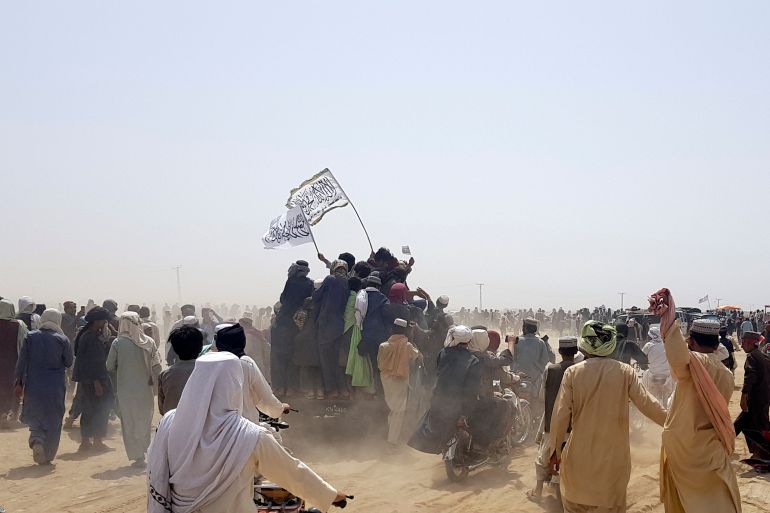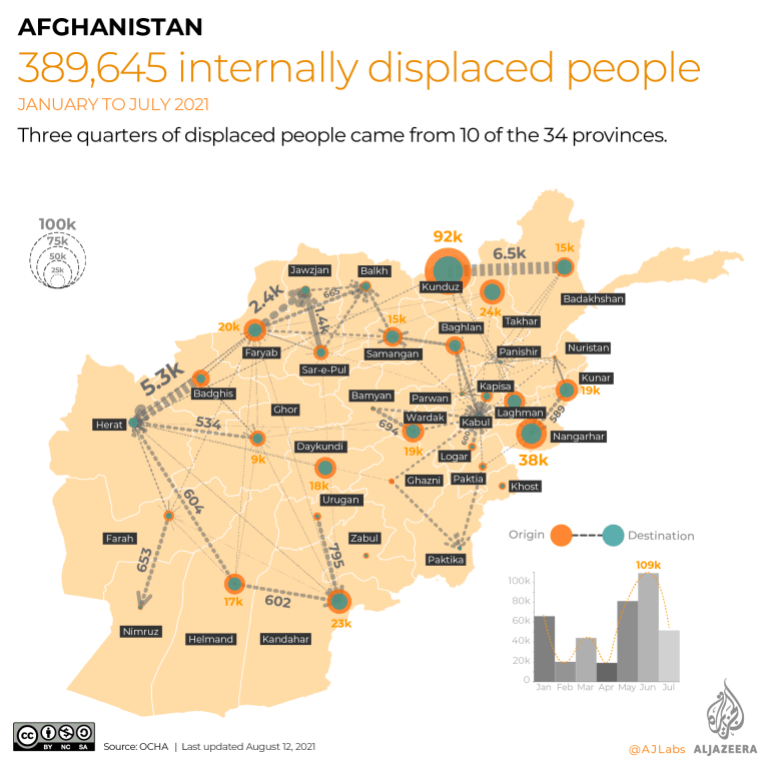Timeline: Taliban’s rapid advance across Afghanistan
A look at the armed group’s significant milestones as it renews its push to capture major cities across the war-torn country.

The Taliban has taken control of Qalat, Terenkot, Pul-e Alam, Feruz Koh, Qala-e Naw and Lashkar Gah, raising the number of captured Afghan provincial capitals to 17.
The armed group has made rapid advances since launching its offensive in May while troops from the United States and NATO nations leave the war-torn country after 20 years.
Keep reading
list of 4 itemsAs Taliban advance, Afghanistan’s finance minister quits job
Germany, Netherlands freeze deportations to Afghanistan
Afghanistan’s leaders must ‘fight for themselves, nation’: Biden
The offensive comes as talks between the Taliban and the Afghan government on a political understanding to lead to a peace deal, backed by the US and its allies, have failed to make significant progress.

Here is a non-exhaustive list of some of the group’s major milestones and advances in recent months:
April 14: Biden announces plan for US troop withdrawal
President Joe Biden announces US troops will withdraw from Afghanistan starting from May 1 and ending on September 11, bringing the US’s longest war to a close. It was an extension of the previous withdrawal deadline of May 1 agreed between the US and the Taliban.
May 4: Taliban launches offensive
Taliban fighters launch a major offensive on Afghan forces in southern Helmand province. They also attack in at least six other provinces.
May 11: Taliban captures Nerkh
The Taliban captures Nerkh district just outside the capital Kabul as violence intensifies across the country.
June 7: More than 150 Afghan soldiers killed
Senior government officials say more than 150 Afghan soldiers are killed in 24 hours as fighting worsens. They add that fighting is raging in 26 of the country’s 34 provinces.
June 22: Series of attacks in northern Afghanistan
Taliban fighters launch a series of attacks in the north of the country, far from their traditional strongholds in the south, and the UN envoy for Afghanistan says they have taken more than 50 of 370 districts.
July 2: Sudden US troop withdrawal from Bagram base
American troops quietly pull out of their main military base in Afghanistan, the Bagram airbase, an hour’s drive from Kabul.
The withdrawal effectively ends the US involvement in the Afghanistan war.
July 5: Taliban says working on a peace plan
The Taliban says it could present a written peace proposal to the Afghan government as soon as August.
July 21: Taliban controls half of Afghanistan’s districts
The Taliban gains control of about half of the country’s districts, according to the senior US general, underlining the scale and speed of their advance.
July 26: US promises continued support to Afghan gov’t
The US promised to continue to support Afghan troops “in the coming weeks” with intensified air attacks to help them counter Taliban attacks.
July 26: Afghan civilian death toll rises
The United Nations says nearly 2,400 Afghan civilians were killed or wounded in May and June in escalating violence, the highest number for those months since records started in 2009.
August 6: Taliban seizes Zaranj, other provinces
Zaranj in the south of the country becomes the first provincial capital to fall to the Taliban in years.
Nine more follow in the ensuing days, including the prized city of Kunduz in the north.
The Taliban never fully controlled the north of the country when it was in power, and seems intent on securing it this time possibly before closing in on the capital, Kabul.
Fighting rages in and around a number of other cities, including Herat in the west and Kandahar in the south.
For events since August 6, check out this timeline.